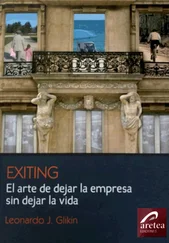Clara Park - Exiting Nirvana
Здесь есть возможность читать онлайн «Clara Park - Exiting Nirvana» весь текст электронной книги совершенно бесплатно (целиком полную версию без сокращений). В некоторых случаях можно слушать аудио, скачать через торрент в формате fb2 и присутствует краткое содержание. ISBN: , Жанр: Психология, на английском языке. Описание произведения, (предисловие) а так же отзывы посетителей доступны на портале библиотеки ЛибКат.
- Название:Exiting Nirvana
- Автор:
- Жанр:
- Год:неизвестен
- ISBN:0-316-69117-8
- Рейтинг книги:4 / 5. Голосов: 1
-
Избранное:Добавить в избранное
- Отзывы:
-
Ваша оценка:
- 80
- 1
- 2
- 3
- 4
- 5
Exiting Nirvana: краткое содержание, описание и аннотация
Предлагаем к чтению аннотацию, описание, краткое содержание или предисловие (зависит от того, что написал сам автор книги «Exiting Nirvana»). Если вы не нашли необходимую информацию о книге — напишите в комментариях, мы постараемся отыскать её.
All illustrations are by Jessy Park.
Exiting Nirvana — читать онлайн бесплатно полную книгу (весь текст) целиком
Ниже представлен текст книги, разбитый по страницам. Система сохранения места последней прочитанной страницы, позволяет с удобством читать онлайн бесплатно книгу «Exiting Nirvana», без необходимости каждый раз заново искать на чём Вы остановились. Поставьте закладку, и сможете в любой момент перейти на страницу, на которой закончили чтение.
Интервал:
Закладка:
I should not, however, allow a metaphor to engulf all autistic art. Stephen Wiltshire, the best-known autistic artist, also has a camera eye, but he makes little use of color, and his fine draftsmanship is as free as Jessy’s is controlled. [29] Stephen Wiltshire, Floating Cities; foreword by Oliver Sacks (New York: Summit Books, 1991).
Mark Rimland works in delicate watercolor washes. Individuals are individuals as well as autistic. Jessy has her own obsessions, her own style, her own family, her own genetics. She’s good at numbers. Her father is a theoretical physicist. She can draw. So can I, and her grandfather was a painter. Would she have been a painter — or a mathematician if she had not been autistic? Who can say how heredity and environment and disability come together?
Nevertheless, the autistic art I have seen has strong commonalities. Buildings are a common subject, and usually one can see every brick. Often these are done from memory, as Jessy drew the science building. Often they are seen from above, or some other viewpoint the artist cannot possibly have occupied. Usually there is characteristic subject matter; one woman obsessively draws traffic lights as people. And there is a characteristic absence; like Jessy, they are unlikely to choose to make portraits. «Too hard. Again we are drawn back to the autistic core. Buildings are straightforward, straight-edged, their outlines clear. Human beings are.. nuanced. Architectural perspective-taking is easy. Social perspective-taking is a different matter.
And that was the handicap we were always at work on. Art is important in itself, as autistic obsessions grow beautiful. But for Jessy it has other kinds of importance. It brings her into contact with people. It enhances her communication skills. It gives her a productive way to fill the empty time after work is done. Compared with these advantages, it hardly seems significant that it allows her to make money.
Certainly people buy her paintings, and the checks are no longer nugatory. Clients choose.their building; Jessy works as readily from photographs as from her own sketch. (The photos must, however, be sharp and detailed; Jessy can combine, but any attempt at invention will be vague and unconvincing.) Jessy’s carefully kept notebook contains seventy-five names and addresses; many of the clients are people she’s met. But not all paintings are paid for, and that too is a social lesson, as she works on her gifts for family and friends. A painting is a fine graduation present for a special housemate — she’ll make sure that her view of his college dormitory shows his window. And she will provide him a description.
One of the many challenges that confront the family of an autistic person comes when she or he turns twenty-two and school is over. (For the past twenty-five years, federal law has guaranteed education for the handicapped until age twenty-two.) The teachers at Mount Greylock Regional High School had worked with Jessy on reading and writing for nine years. She had achieved what might be called a fourth-grade competence, and we didn’t want her to lose it, as she certainly would if it wasn’t exercised. So we provided her with factual material on her obsessive interests books on the planets, brochures, newspaper accounts of power outages — and she read of them what she could. We had her write thank-you letters; written politenesses were actually good. Her journals were done at our suggestion. But the descriptions were Valerie’s idea, Valerie who had known her so long, and who was still a friend. When Jessy made her a portrait of her bathroom heater, Val suggested she write a description.
The first descriptions were only a couple of sentences, and those heavily prompted. Jessy had no idea how to begin or how to continue. More significant for effective communication, her defective „theory of mind“ afforded no insight into what a viewer would find obvious and what he would need to be told. So each description gave not only practice in grammar, syntax, vocabulary, and spelling („vermilion“, „carmine“, „cobalt“), but in that fundamental aspect of writing, and living: imagining the reader’s point of view. I asked questions: Do you think they’ll see the different pinks? How many are there? What do you want to tell them next? And over the years — not months — I was suggesting less and less, and the descriptions got longer and longer. (Several are reproduced in Appendix I.) They became a habit, then an unbreakable routine. Jessy would finish a painting; that night she’d say, „We will write the description“.
But one night — seven years later? ten years? I can’t keep records of everything — I was going out. „We can’t write it tonight“, I told her, „we’ll do it tomorrow“. And when I came back it was done. It was a draft, we edited it a bit together, but Jessy had written it. So slow, so gradual, is the building of a simple, essential skill.
I have in this chapter already exhibited my own penchant for metaphoric thinking. It’s a tempting activity, to read our own meanings into Jessy’s pure colors and shapes. „Earth shadow, resembling a rather menacing tornado, hovers behind her sister Katy’s house in Cambridge“. But the writer of that vivid, and accurate, sentence, knew Jessy well enough to draw back from his suggestion. Describing another painting he makes it clear: „The lightning bolt and the black windowpanes, which contribute to the ominous, almost Gothic quality of this painting, are merely the signs of a power failure for Jessy“. [30] Ernest C. Pascucci, exhibition catalog for „A World of a Different Color — The Paintings of Jessica Park“, The Bookcellar Cafe, Cambridge, Massachusetts, February 29-May 1, 1992 (unpublished).
When another viewer felt that quality, he remembered Jessy’s astronomical interests and speculated about a black hole. But Ernie knew the true source of that intensity. „A blackout, the phenomenon that temporarily disrupts the flow of the appliance world, is cause for great excitement and planning. If rain is in the forecast, Jessy will make sure to set her auxiliary battery-powered alarm clock, lest rain turn to thunderstorm, thunderstorm cause power outage, and power outage stop the clock“. Now that would be ominous.
In short, Jessy’s codes are not ours. Once someone asked for happy colors and Jessy was nonplussed. Once someone thought she should be frightened of the dark. Once someone thought outer weather could symbolize inner weather. But symbols, if they communicate at all, carry socially attributed, agreed-upon meanings. For Jessy, things are what they are, and if they have meanings, they are wholly idiosyncratic. To understand her is to understand that.
Painting has become part of Jessy’s life. It’s part of my life too. When she’s working on a commission I want to see it every day, not to check up, but to delight in the unfolding process, as color by color, shade by shade, Jessy realizes the order that is already diagrammed in her mind. However odd I find her choices, brilliant or neutral, saturated or pastel, her endgame will, I know, bring them into unpredictable, perfect balance. The work will stretch over months; Jessy takes the long view. Painting is a small part of her full life, an activity like another, just one of the things she does. Certainly she chooses to do it, but I’m by no means sure she’d keep doing it without the continuing reinforcement of checks. When she comes home from work she doesn’t rush to her worktable. She’ll vacuum first, or relax in her rocker, or take out the trash, or make cookies or tuna fish casserole or Puerto Rican beans; painting is for the bits of afternoons and evenings when she has nothing to do. Except for Saturday nights. Then Party Mix is on the radio, and Jessy will put in two hours of concentrated work. It’s the only time she listens to music now — it’s no longer „too good“, but still turned so low that I can barely hear it through her closed door. The Sunday morning viewing is one of my great pleasures.
Читать дальшеИнтервал:
Закладка:
Похожие книги на «Exiting Nirvana»
Представляем Вашему вниманию похожие книги на «Exiting Nirvana» списком для выбора. Мы отобрали схожую по названию и смыслу литературу в надежде предоставить читателям больше вариантов отыскать новые, интересные, ещё непрочитанные произведения.
Обсуждение, отзывы о книге «Exiting Nirvana» и просто собственные мнения читателей. Оставьте ваши комментарии, напишите, что Вы думаете о произведении, его смысле или главных героях. Укажите что конкретно понравилось, а что нет, и почему Вы так считаете.
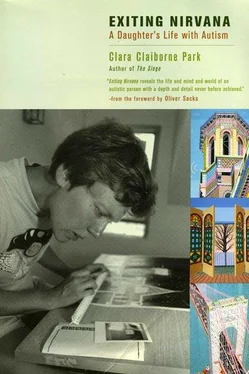
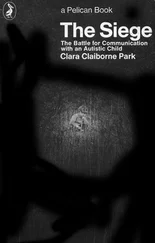

![Майкл Азеррад - Come as you are - история Nirvana, рассказанная Куртом Кобейном и записанная Майклом Азеррадом [litres]](/books/392533/majkl-azerrad-come-as-you-are-istoriya-nirvana-ra-thumb.webp)
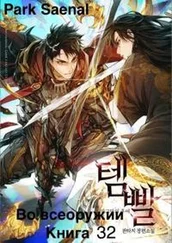
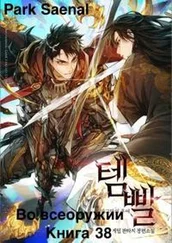

![Эверетт Тру - Nirvana - Правдивая история [litres]](/books/399241/everett-tru-nirvana-pravdivaya-istoriya-litres-thumb.webp)




